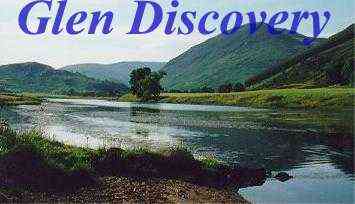
 |
The Battle of Culloden - Peter Watkins |
|
Peter Watkins, the maverick British film-maker died aged 90 on 30th October 2025. His reputation as a film-maker rested primarily on a film that was banned from the television screen for almost 20 years. The War Game, which he made in 1965 using a stark documentary style and non-professional actors, imagined the impact on Britain of a nuclear war. Although happy for it to be shown in cinemas, the BBC’s director-general, Sir Hugh Greene, was afraid that it was “too horrifying for the medium of broadcasting’’. Although I remember watching the War Game when it was eventually screened by the BBC, I am personally much more interested in Watkins’s first BBC film, Culloden which was made in 1964 when he was still only 29, it was a remarkable portrayal of one of the last battles to be fought on British soil, in April 1746, when brutal soldiery under the Duke of Cumberland met and massacred the ragged Highland forces of the Jacobite rebel, usually known as "Bonnie Prince Charlie". To simulate the battle Watkins employed a cast of some 140, recruited from the Inverness area and from England. He assembled them on a moor near Inverness, dressed them in military costume, armed them with the weapons of the time and subjected them to three weeks of filming, much of it in bitter cold and driving rain. "Culloden" portrays the Battle of Culloden which in the words of the narrator “tore apart forever the clan system of the Scottish Highlands”. The film was hailed as a breakthrough for its cinematography, as well as its use of non-professional actors and presentation of an historical event in the style of modern TV reporting. Watkins is known for pushing boundaries to the extreme with his documentaries and his films continue to inspire today. Watkins was unsparing in his depiction of the slaughter. The film clearly marked out “Butcher” Cumberland as the villain of the piece. In a bold and unusual stroke, derived from Brechtian theatre, Watkins had his actors break out of the action from time to time to address the camera and comment on the action. Nothing like Culloden had been seen on television before. It was praised by the critics and Watkins won a Bafta for it the following year. As a teenager living in Inverness in 1964 I wasn’t actually involved in the filming, but I remember it taking place, including in streets, long since demolished, around Inverness town centre where the brutality of the redcoats after the battle was filmed. I have family connections to the actual battle on 16th April 1746. My MacGregor ancestry takes me back to Glen Gairn, Braemar. I descend from Duncan, a younger son of Alexander MacGregor in Inverenzie (or Inverigny), Glen Gairn. Duncan was just 14 years old at the time of the battle and probably was not involved. Twenty four of his kindred from Glen Gairn joined the Jacobite army as part of the 300-strong regiment led by Francis Farquharson of Monaltrie. Very few of the MacGregors would return home. The descendants of Gregor Mòr in Glengairn Deeside tradition holds that 24 MacGregors marched to Culloden and only 6 returned. There is, near the chapel at Ardoch, a mound called the Laird's Seat, where one of the survivors is supposed to have sat day after day mourning the MacGregors slain at Culloden. It is said that the laird, McGrigor of Inverigny, as he was known, and Fleming of Auchintoul, fell wounded side by side... In the evening, while both lay writhing with pain, some soldiers passed, and one of them, seeing McGrigor move, drove his bayonet through his shoulder, and thus died the Laird of Inverigny. The Laird of Inverigny would have been Duncan's grandfather, as his father, also named Alexander, was said to have fled to Germany after the Rising. James, a shoemaker in Banff (1718-1758), the first cousin of my ancestor John Lawrie (1712-1781), was reported in the Banff session records to have been "in arms with the rebels". James escaped and married Elspet Pirie in 1748; his wife's father, John Pirie, was reported to have been at Culloden for the Jacobites. It is not known whether John survived. Clearly there was Jacobite support in Banff but no other Lawries were mentioned as Jacobites in the burgh records. The Battle of Culloden was the culmination of a Civil War between Scots, not just another Scotland against England conflict. My MacLeod, MacKay and Polson forebears in Sutherland were listed in the militia companies raised by the Earl of Sutherland on the Hanoverian side. At least one of those companies was at Culloden, although I have no way of knowing if any of my own Sutherland ancestors were actually present. Click here to watch the Lionheart edition on YouTube of the film Culloden |